A Comprehensive Guide to Collecting Art Advice from an artist on building a collection to last a lifetime
“Art enables us to find ourselves and lose ourselves at the same time.” -Thomas Merton
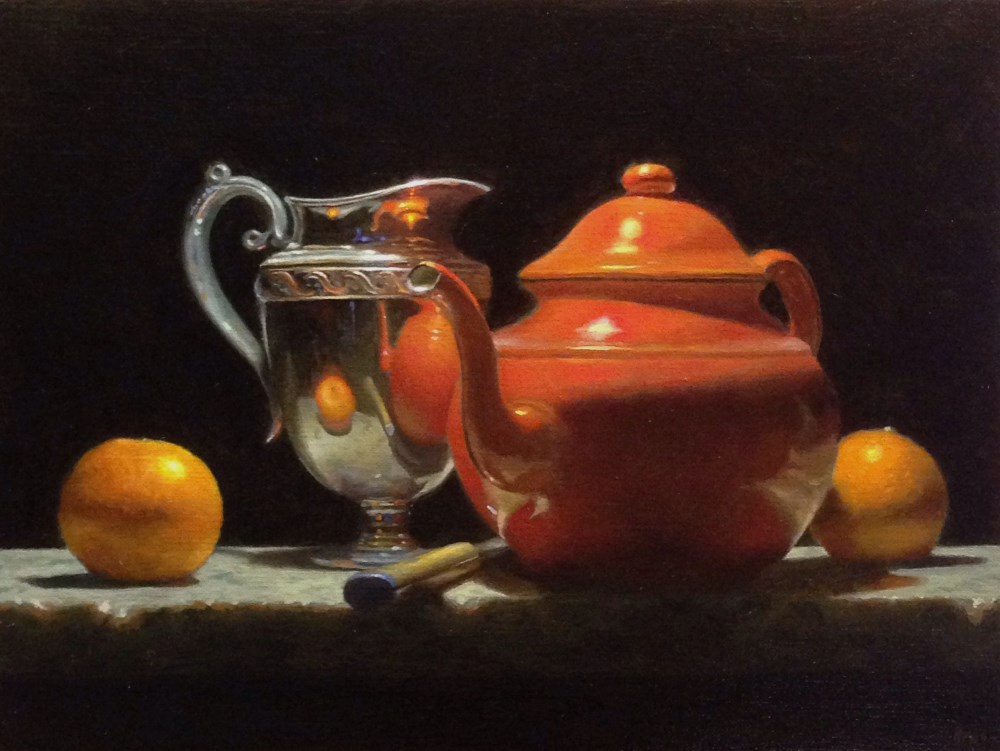
"Contemplation: Oranges, Silver, and Red Teapot"
Are you an art lover who has always dreamed of bringing the character and beauty of original art into your home?
Maybe you’re confused by an art world that seems like a strange and bewildering tribe, and don’t know what your first step should be?
Perhaps you already have a few pieces of original art but feel like proceeding in a more organized way?
Looking at it from the outside, collecting art can at times seem like the confusing and exotic domain of the extremely well-heeled, but the reality is far, far different. With a thoughtful approach, some solid planning, and good guidelines to follow, even a modest budget can be transformed into a collection of art that you and your family will treasure for a lifetime – perhaps generations.
My goal here is to empower you to begin this exciting journey.
“Art and love are the same thing: It’s the process of seeing yourself in things that are not you.” -Chuck Klosterman
Jennifer and Mike want to build an art collection
Jennifer and Mike have been friends of my family for years. They’re in their late 30s, professional, and are raising a pair of lovely children, now in their early teens.
Over the years they’ve purchased a few pieces of original art from artists they know personally. For instance they have one small painting of mine – a group of marbles.
For the most part, though, they have decorated their suburban Boston home with framed reproductions. It’s been a convenient and cost-effective way to surround themselves with art they enjoy. However, as they grow into a different phase of their lives – with more discretionary income and some extra time – they feel like it’s time to move beyond prints and start bringing more original art into their home.
They’re also a little unsure how to proceed, since they don’t feel they have much experience with the art world beyond a few gallery visits.
Over a recent dinner, Jennifer and Mike asked if I had any advice about starting an art collection. They found the thoughts I shared with them helpful, and even suggested that I put them in written form to share with others.
So… how do you start?
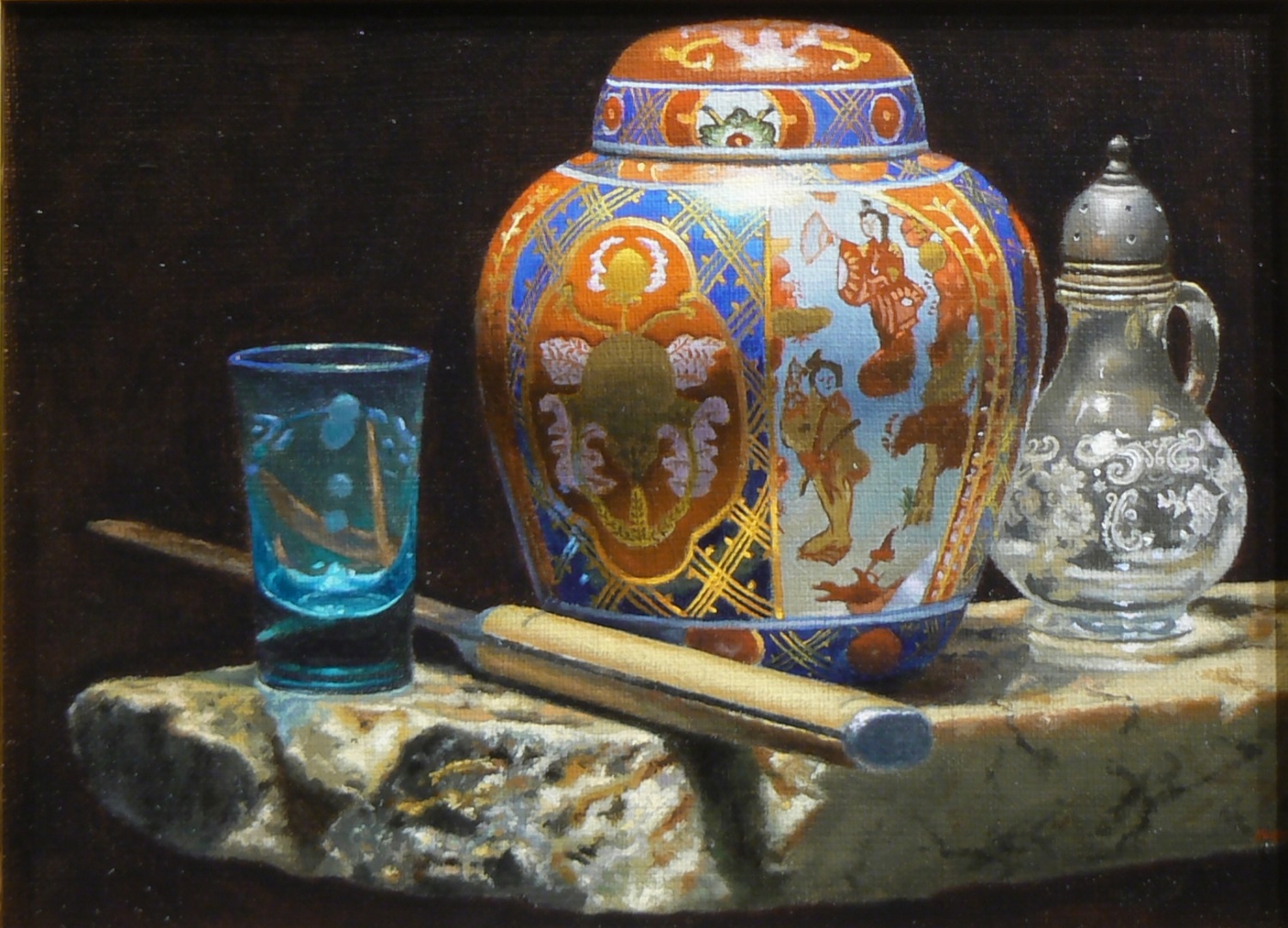
Oil on Linen, 9×12 Inches, 2015 (sold)
“When you collect art, you’re not buying things. Instead, you’re making a statement about exactly who you are.”
Think about why you collect art
This may seem like an obvious point, but it isn’t. When you collect art, you’re not buying things. Instead, you’re making a statement about exactly who you are.
The collection of art you build is a mirror of you as a person. It will reflect your dreams, hopes, fears, and aspirations. It will reveal your quirks and your sense of humor, what you find meaningful, and what you don’t. It will display your own personal understanding of beauty. It is a crystal clear statement about the way you see the world, and how you wish the world to see you.
When I visit a person’s home and look at the art they surround themselves with, I feel like I instantly have a better understanding of who they are. Your art collection is a mirror of who you are, where you came from, and perhaps even who you desire to be.
Your collection is as uniquely you as your fingerprint.
“Collecting art is not – and probably never has been – just for the wealthy. You can be an art collector as well.”
Drop your preconceived notions about who collects art.
Collecting art is not – and probably never has been – just for the wealthy. You can be an art collector as well. Especially in today’s world, fine art is available nearly everywhere, and even a small budget will be enough to begin.
Original artwork is available for the cost of a good dinner and movie tickets. Many artists price their introductory works at just $100, and exceptional small masterpieces are often available for under $500.
Herbert and Dorothy Vogel spent their lives amassing a major collection of contemporary art. She was a librarian and he a postal clerk, and they only used their disposable income to purchase the art in their collection, which ultimately numbered nearly 5,000 pieces.
They built their entire lives around this collection, and no doubt they had a lot of luck and tenacity, but they proved conclusively that ordinary middle-class people can indeed become art collectors. World-renowned art collectors, at that.
“The best place to start is with the heart. Take some time to hone in on what you truly love, and proceed from there.”
Begin by finding the art that you truly love
The best place to start is with the heart. Take some time to hone in on what you truly love, and proceed from there.
Pick 10 pieces of art that speak to you. These can be anything – from sketches you saw at a local craft fair to iconic masterpieces in the best museums. Print out copies if you don’t have access to the originals, and lay them all out on a table in front of you. Then spend 30 minutes trying to see if there’s a common thread that unites some or all of them. Taking a few notes may help with the process.
This is an excellent way to develop your gut instinct, which will be your strongest assets in building your collection. We all know that moment when we walk into a museum and see that one piece that makes us stop in our tracks and look at it. You want to learn to harness that energy – it will be your best guide – and this exercise is a great way to begin to nurture it in a deliberate and conscious manner.
While art appreciation courses are excellent and helpful, for the moment you want to forget everything you learned. This is about you, not what somebody else told you.
You may find it useful to repeat the exercise at one-year intervals, just to see how your tastes have developed over time. Developing your eye and growing your intuition are lifelong activities.
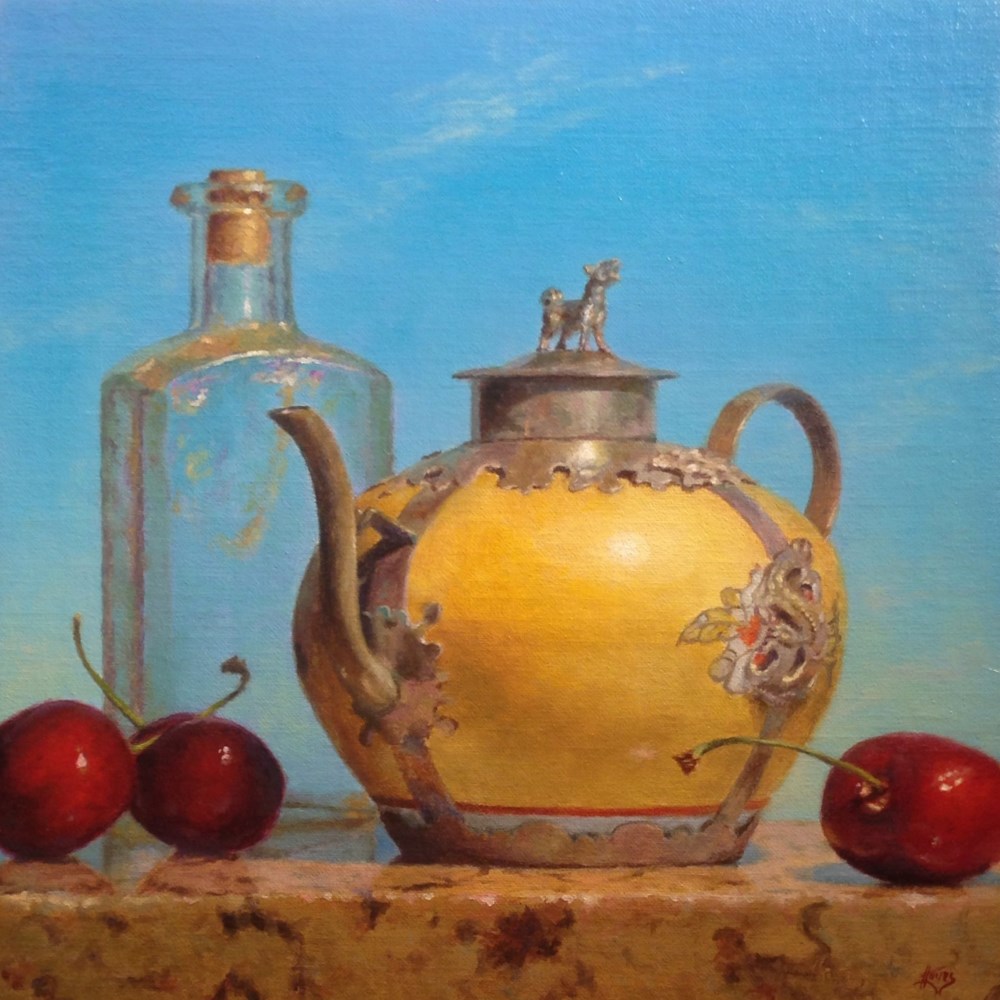
Oil on Linen, 10×10 Inches, 2016 (sold)
“The most important resource of all to you as an art lover and collector is the internet.”
See a lot of art… a LOT of it
Once you begin to consciously understand what draws you to certain kinds of artwork, get out in the world and see as much of it as you possibly can, preferably in the company of somebody who shares your passion.
Museums and galleries are the obvious places to begin. Most people live within a reasonable drive of a good art museum, and galleries are even more numerous. If you live in a major metropolitan area, the opportunities will be countless.
Many galleries display the works of their artists in rotating exhibits, usually lasting 1 to 3 months. These shows may feature just one artist, or it may be a group exhibit. There is typically an opening night at the beginning of the exhibit, and these receptions are an excellent way to get to know your local arts community. The artists themselves may well be there, as well as the gallery owners and many fellow art lovers who share your interest.
Art fairs are a great way to see a wide range of work all at once. These generally run for a weekend, and the artists are most often there offering their own work. There is a near-endless stream of regional and local art fairs, and you should be able to find at least one near you every year.
Many artists hold open studio events once or twice a year, inviting the public into their workshops. This is an excellent opportunity for you get to know artists directly, which will be become an important and exciting part of your journey. Much more on that below!
Don’t overlook less-obvious places to see art. Many corporations have substantial collections which they display in their lobbies and offices. Restaurants and coffee shops often act as secondary gallery spaces for artists looking to display work early in their careers. And of course, your friends and family may already have fine art for you to spend time with.
Auction houses may also be an excellent place to view works, as they typically exhibit works for inspection before the bidding begins.
And of course, the most important resource of all for you as an art lover and collector is the internet. Many museums have digitized their entire collections for public browsing. Most artists now have websites where at least a part of their output can be seen, and in general they are quite concerned about presenting their work well online.
You should always try to see some artwork live and in person, but nothing will substitute for the tremendous breadth and depth you can achieve with few hours of browsing good art online.
“There will be countless galleries and artists that will be delighted to develop a lasting and meaningful relationship with you as a valued customer.”
A word of caution about galleries.
For the most part, I have found galleries to be warm, civilized, and inviting places to spend an hour looking at the art and perhaps having a pleasant conversation with the staff. Good galleries will invest time and energy in educating collectors and helping develop their tastes.
However, one of the more unfortunate realities of the art world is the culture of exclusion.
Galleries can indeed seem like intimidating environments – especially for newcomers to the art world. Some are even deliberately engineered to exclude all but a narrow class of buyers, both in their physical layout and in the behavior towards customers. We have all walked into a gallery and felt the cold shoulder from the staff.
Do not tolerate this behavior, ever.
Keep in mind that there is nothing magical about an art gallery – they are nothing more than retail stores, offering shoppers a particular type of product. Period. Remember that you are the customer and therefore have all the power in the situation, and they are there to serve you. If you feel disrespected or treated discourteously in any way whatsoever, walk out the door at once and never return.
There will be countless other galleries and artists that will be delighted to develop a lasting and meaningful relationship with you as a valued customer.
“As a collector, the very best thing you can do is develop a relationship directly with the artist.”
Get to know the artist if possible
Galleries come, and galleries go. That is the unfortunate nature of small local businesses.
As a collector, the very best thing you can do is develop a relationship directly with the artist. In fact, you should look on these as your primary relationships in the art world. You can seek artists out at gallery openings, art fairs, open studios, lectures, and of course through their websites and social media pages.
Knowing the artist personally will enable you to learn a great deal which you would otherwise be unable to discover. They will be able to give you insights about the work; the themes they think about, their creative process, and the materials they work with. They may be able to share thoughts about how the art should best be presented and displayed, and perhaps how it relates to other works in your collection.
Most important, you will get to know something about the artist as a person as well. This added dimension will greatly enrich your appreciation and understanding of their artwork, and take your acquisition far beyond the level of a mere purchase.
Over the years, a number of my regular collectors have become close personal friends. The bond that grows out of this shared interest is a special one indeed, and I deeply cherish these relationships.
And one major benefit: Artists usually offer their finest works to their regular collectors first.
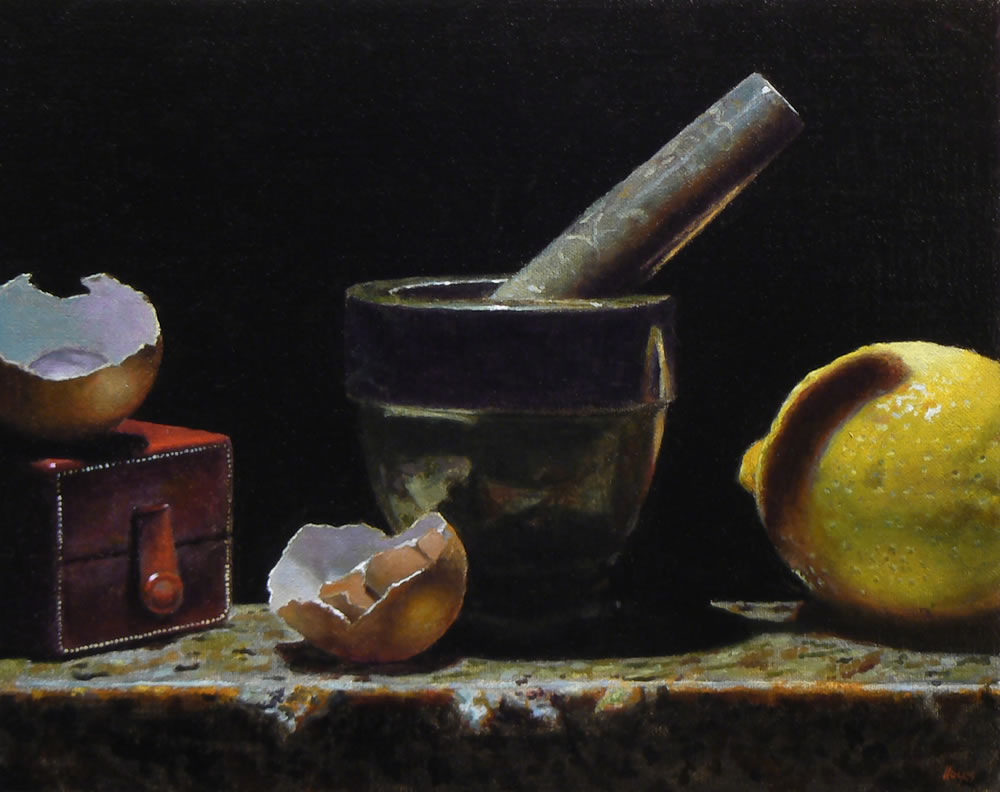
Oil on Linen, 8×10 inches, 2010 (sold)
“It’s important for you as a collector to know that the artist only receives a fraction of what you pay a gallery for their artwork.”
Try to buy directly from the artist
This is probably the single best thing you can do to support the artists whose work you love.
It’s important for you as a collector to know that the artist only receives a small fraction of what you pay a gallery for their artwork. A 50% consignment fee is the industry standard, and the artist is also generally responsible for framing and shipping the work to the gallery, as well as the cost for the materials to make the art in the first place.
So, of the $1000 you paid to the gallery for a painting, the artist may well only earn $350 in the end. I’m sure you as a collector would prefer that your investment fully go to support the artist and enable them to continue creating the art you love.
One caution; while artists may offer a modest discount to thank their best collectors for repeat business, you should not expect nor request substantial discounts when purchasing directly from the artist.
I once had a gentleman demand a 50% discount on a large painting because he wished to purchase it from me and not through a gallery. It does not work that way. Artists surrender the consignment fee to a gallery in exchange for the gallery’s efforts in marketing, promoting, and selling their work.
However, artists who market, promote, and sell their own work (and today that includes nearly all of us to some extent), incur many of the same expenses as galleries, and need to be able to cover those expenses in order to turn a profit at the end of the month. It is simple business logic.
Ultimately, the rewards for you as a collector are immense when you develop a strong, long-term relationship with an artist you admire, and work directly with them to build your collection.
“Most collectors have found that a modest beginning serves them well, now and in the long term”
Start small, and build
Of course, if the first piece of art you MUST have is the size of a garage door, and your budget and wall space permit it, then by all means. However, most collectors have found that a more modest beginning serves them well, now and in the long term.
Many artists price their smallest works in the $100 range, and these provide an excellent place to begin your collection. Rather than investing $1000 in a single larger piece, you can purchase numerous smaller works with the same amount.
This will increase your experience with acquiring multiple works, and will begin to sharpen your sense of the direction you would like your collection to move in. It will allow you to practice your collecting skills without undue fear of making costly missteps. .
In fact, you can think of this as investing in an education in how to be an art collector.
“Consider buying your first larger works from the artists who created the smaller pieces you now have.”
Move on to larger “anchor pieces”
Once you have some experience with smaller pieces and have grown in confidence, you will probably wish to begin adding more substantial works to your collection. The small pieces you began your collection with will provide an excellent guide for the larger pieces you will begin to add.
In fact, I would suggest you consider buying your first larger works from the artists who created the smaller pieces you now have. Not only will this automatically provide cohesion within your collection, but it also allows you to begin providing clear links between individual pieces.
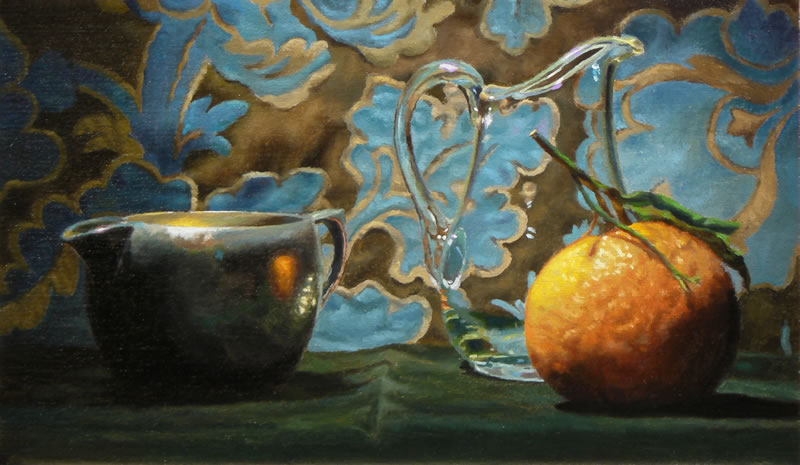
“Bear in mind that collecting art and decorating with art are two different things”
Consider your surroundings, but only to a point
Does your art need to match the sofa? That is entirely up to you.
It’s important to bear in mind that collecting art and decorating with art are two different things. An interior designer selecting a painting for a client will most likely be making decisions solely based on the harmony of the overall design she wishes to create. An art collector looking at exactly the same painting may well also consider how it relates to their home decor, but will also consider how it relates to their collection. Of course, the two considerations are by no means mutually exclusive.
It’s also good to remember that art does not necessarily need to hang on the wall. There are plenty of less traditional placed in your home that can come alive with a well-placed smaller work of art; bookshelves, window sills, desks, even above doorways. I was once given a tour around the home of one of my collectors, and saw one of my paintings tucked in the corner of their pantry. It was indeed a beautiful and classic Victorian pantry, but there it was, propped up against a bag of sugar.
This is one aspect of collecting art where there are truly no rules whatsoever.
“A good art collection is an organic entity in which every piece somehow relates to every other piece”
Developing a theme for your collection
Many collectors find they wish to organize their collection around a specific theme. While by no means necessary, you may find this helpful way to understand your collection and guide future additions.
A good art collection is an organic entity in which every piece somehow relates to every other piece. That doesn’t mean that they all match, and it certainly does not mean that they are all alike, but they should all feel like they somehow belong together – that the group as a whole is somehow stronger than the individual parts.
This commonality can be literally any aspect about the artwork which you find personally meaningful or appealing. For instance, you may wish to have still life paintings containing apples, or self portraits, or sculptures of frogs.
You may have no idea what the theme should be at first, and that is a great place to begin. It will organically emerge out of the first works you acquire. If you want to approach it more analytically, repeat the exercise I suggested earlier; selecting 10 works of art and studying them for the common thread. At this point, though, you would certainly want to include any works you have already added to your collection.
While most collectors to wish to maintain consistency to the theme they have chosen, it should never be an inflexible rule. If you find yourself drawn to a work that falls outside your theme, then so be it. Remember that this is always about what you love; first, foremost, and last.
“Most transactions follow the familiar model of any other simple purchase. There are a few exceptions to be aware of, however.”
What to expect when you purchase artwork
Most transactions will follow the familiar model of any other simple purchase; you pay for the artwork in full and either leave with it or expect to have it delivered at an agreed-upon time.
There are a few exceptions to be aware of, however.
Artwork that is part of a promoted exhibit – for instance a one-artist solo show at a gallery – can be purchased at any time during the show, but is customary for the work to remain on display until the end of the exhibit. A red dot on the label or next to the painting shows that it has sold.
Many galleries and artists also allow collectors to take individual works home on approval before finalizing a purchase. This allows you to see the work in place before making a final decision. Terms vary, but typically you will place a fraction of the purchase price as a security deposit, and take the work for a limited time – generally a week.
Payment plans and installment purchases are also frequently available, though not always explicitly stated. This is especially true for larger works. Creative financing may also be available; I am aware of one arrangement in which a collector signed an automobile over to a gallery in exchange for credit towards purchases of future artwork. When in doubt, ask.
As with any commodity, negotiation of price is possible at the seller’s discretion, but you should temper expectations of a large discount. As I mentioned above, a gentleman once demanded a 50% discount from me on a large painting, simply because he purchased it from directly from me and not through a gallery. It was an unreasonable request, and it certainly did not happen.
Many artists and galleries, though, will consider modest discounts to their best collectors, mostly as an acknowledgement and appreciation for customer loyalty. A 10% discount on a large painting that a regular collector is purchasing would certainly be fitting, and all parties involved would be quite comfortable with that arrangement.
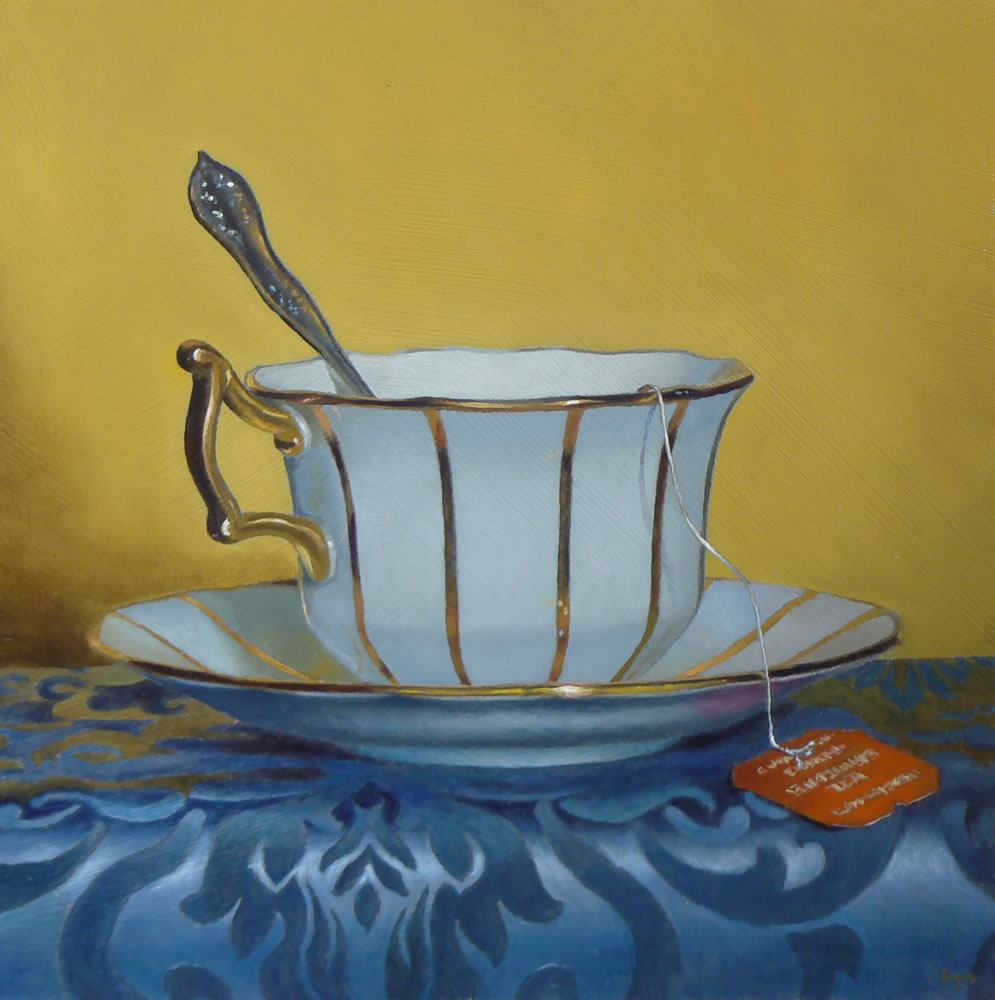
“The most exciting and transformative development in the art market – perhaps ever – has been the explosion of online exhibits and sales.”
Buying Art Online
The most exciting and transformative development in the art market – perhaps ever – has been the explosion of online exhibits and sales.
Twenty years ago, collectors were more or less limited to what their local gallery could place in front of them and perhaps what they could see at art fairs within driving distance.
No more.
Collectors now have instant access to nearly every artist in the world. Consider that for a moment.
Many artists eagerly welcome and embrace this opportunity. Not only do they make their work available for viewing and purchase online, but they often write about their creative process on blogs, and most significantly make themselves available to speak directly with collectors through social media. Artists and their collectors can now easily forge direct, lifelong relationships, regardless of location.
There are things to be aware of when purchasing artwork online, and the most important is image quality; you certainly want the artwork that arrives at your home to look exactly like what you purchased on the website.
Especially look for artists who are very conscientious and deliberate about their images. Ideally they should display high-resolution images of their work, preferably even with detailed shots of the artwork, allowing you to get a real, closeup view of the work.
The gold standard would be a description of the setup and equipment used to take the photographs, in particular the lights used. While you will not wish to duplicate the lighting itself, attempting to match the color temperature of the lights the artist used while creating and photographing the artwork will ensure a very close correspondence to what you see online.
Make sure that the terms of the purchase are clearly described. This of course includes price and payment methods, as well as whether the work will be sold with or without a frame. Be certain to look for images of the frame if it is part of the purchase.
The artist should also clearly explain their shipping methods and policies. The cost of the shipping should be explicitly listed, or there should be a way to estimate shipping expenses. You will also want information about how the painting will be shipped; what carriers may be employed, what insurance (if any) will be purchased, and estimated delivery time. Ideally, the artist will also relate information about how the painting is physically packed to protect it during shipping.
You will also want to look for information about the return policy, including how shipping on a return is paid for. I would strongly advise you to not purchase from an artist who does not offer a full refund if you are not completely satisfied for any reason, whatsoever.
“Set a budget for your art collection, and stick to it.”
Respect your budget
Finances are an extremely personal matter, so I will only offer limited advice. Ultimately, you should spend exactly as much on your art collection as you are comfortable with. A reasonable place to start, however, might be a rule of thumb I once heard about hobbies in general: Expenditures should be roughly equivalent to expenditures on your automobile. Of course that may change over time; and your own circumstances will always dictate your budget..
Whatever the amount is relative to your assets, I believe it very wise to set a budget for your art collection, and stick to it. You are building a collection that represents the very best aspects of yourself, and your daily experiences with it should only be of enjoyment and satisfaction.
Regret over spending too much for a piece of art should never be a part of that experience.
“I often hear collectors speak not about owning their works of art, but instead about living with them – almost as though they are family members, not possessions.”
Art IS an investment, but not necessarily a financial one.
Art as an investment is outside the scope of this article, but there are a few thoughts that are good to keep in mind as you build your collection.
Some art indeed does rise steeply in value over time. A contemporary painting by Basquiat that was purchased for $20,000 in the 1980s was recently purchased for $110,000,000. This is by no means typical, however, and you certainly should not expect to realize similar gains. Purchasing art purely for investment purposes is a rarified activity, and should be done only with the advice and guidance of a qualified professional.
The best way to think about the value of your collection is by considering what it means to you. It surrounds you with beauty, grace, and meaning, and makes a powerful statement about who you are. You will spend many hours appreciating the artwork; realizing new meanings and interpretations, discovering details you’d never noticed before, and growing as an art lover as you do so.
I often hear collectors speak not about owning their works of art, but instead about living with them – almost as though they are family members, not possessions.
The art you live with may or may not enhance your financial portfolio, but it will undoubtedly enrich your mind and spirit, and that is worth far more than whatever you paid for it.
This is what you are truly buying when you collect art. It is an investment in you, yourself.
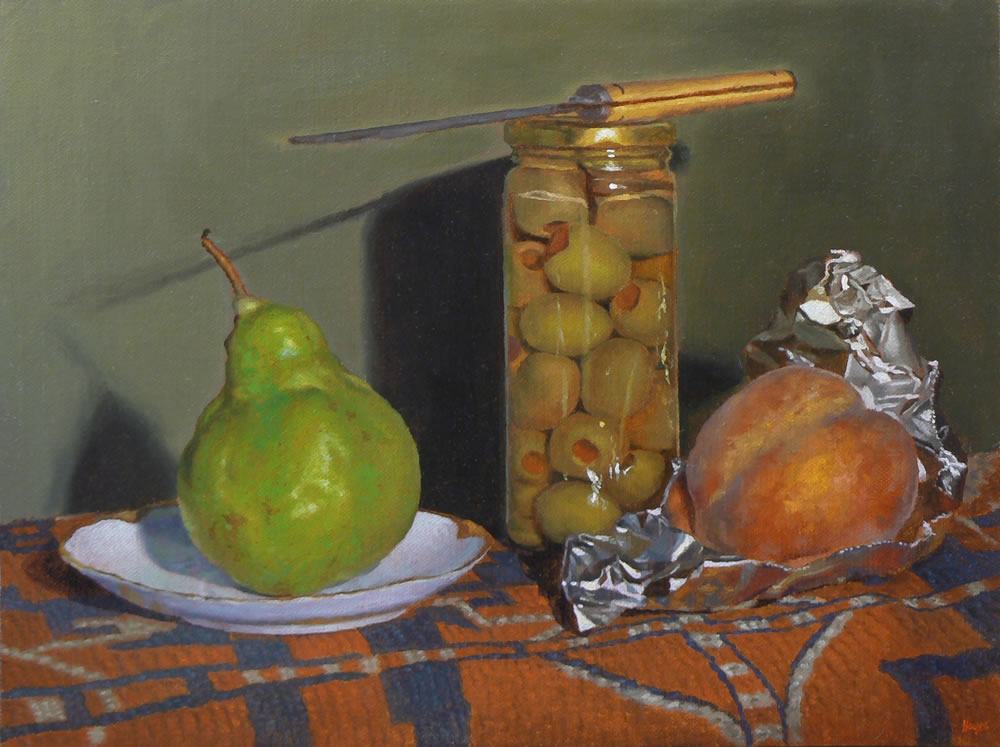
Oil on Linen, 9×12 Inches, 2014 (sold)
“Any time a piece of paper is generated related to your collection, hold on to it.”
Keep Careful records of your collection
Keep all papers related to your collection, and plan to keep them forever, in a place where they will be difficult to lose or destroy. First and foremost, this means the sales receipt. It also means records from framers, restorers, conservators, etc. Letters from the artist related to works in your collection should certainly be kept, and you may wish to print out any relevant emails as well.
Basically, any time a piece of paper is generated related to your collection, hold on to it.
Provenance in the art world simply refers to an artwork’s chain of ownership. Particularly for older and rarer works, it becomes an important factor in determining authenticity and value. A painting which has unbroken documentation from the time it left the artist’s studio to the present may well be worth significantly more than an equivalent painting without such provenance.
These documents are also critical in valuing your collection if you choose to have it insured, or if you wish to resell individual pieces later.
Should you wish to leave your art to your heirs or an institution, careful records will be critical in preserving the value and vision of the collection you have built, and make the process much smoother for all involved.
“You may wish to consider a separate insurance policy just for your collection”
Insuring your collection
Like investment art, the subject of insuring your collection largely falls outside the scope of this article. However, it is important to be aware of it as you being collecting, and to be prepared to research the subject more as you progress.
It is possible that your homeowner’s policy may provide some basic coverage for your collection. You will need to verify this with your insurance agent to establish whether your policy includes possessions of this nature.
As your collection grows – particularly if it begins to represent a large financial investment – you may wish to consider a separate policy just for the collection. Your insurance agent may be able to point you in the proper direction.
Paperwork establishing provenance and purchase history is especially important for this purpose. As mentioned above, you should keep all paperwork related to your collection in the safest place you can provide for it.
With any financial matters, you should proceed only with the help and advice of a fully qualified professional.
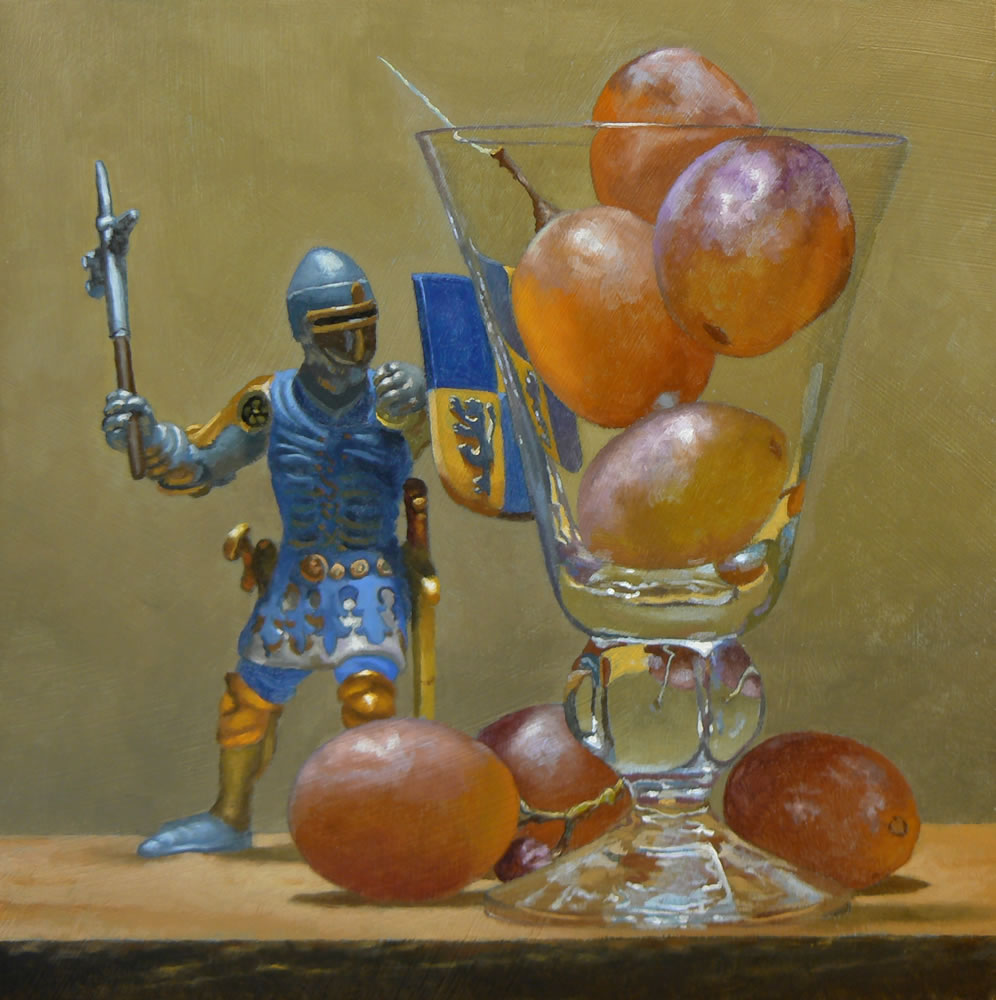
"Sneak Attack"
“Involving your children with your collection can ensure that these values you hold dearly are passed along to the next generation.”
Get your whole family involved
If you have children at home – particularly young children – involving them with your art collection can be a wonderful way to instill value you care about; culture, beauty, community, support for the arts, as well as financial resource management and responsibility.
Several collectors I know routinely buy smaller artwork for their children. One collector even gives his daughter a budget and allows her to make her own choices.
Involving your children with your collection can ensure that these values you hold dear are passed along to the next generation.
“Had this couple not chosen to share their art, I would not have had that wonderful opportunity which I still cherish. ”
Share the love
Finally, consider sharing your collection. I don’t mean give it away, but certainly invite your friends family to see the collection in your home. There may be ways to share the work outside of your home as well, lending art out to parties, receptions, even displays at local venues etc. Make your art available to others who may love it as well.
The very best museum exhibit I ever saw was a private collection of Dutch masterpieces. The collectors were of course extremely affluent, but ultimately this was simply the art they lived with, and hung on their living room and dining room walls.
For several months, they loaned it to a regional museum, and it then toured to several other museums around the country. I saw that exhibit 5 times, and grew in real ways as an artist because of it. Had this couple not chosen to share their art, I would not have had that wonderful opportunity which I still cherish.
“Your collection will become a significant part of your life, which you can share with your family, friends, and wider community.”
Your future as an art collector
Collecting art is for everybody… Everybody!
The collection you build will be unlike any other, and will express exactly who you are. Building relationships as you build your collection – particularly with the artists themselves when possible – will fully support those artists you care about, as well as ensuring your ability to acquire the very best pieces from them.
Over time, your collection will become a significant part of your life, which you can share with your family, friends, and wider community. It will certainly bring you a lifetime of grace, beauty, and satisfaction.
I hope my thoughts about collecting art have been as helpful to you as they have been to my friends Jennifer and Mike. They have fully embraced these ideas, and now see themselves as true art collectors.
I hope this empowers you to do the same, and I wish you all the best on your art collecting journey!
I would love to hear from you. What was your first piece of art? How have you grown as a collection over time? Do you have any other good suggestions about collecting?
Thank you!